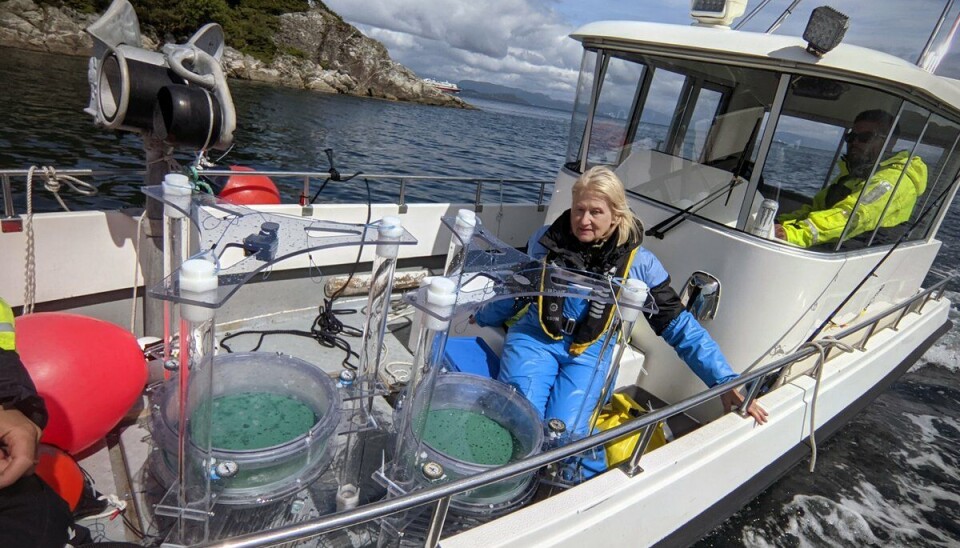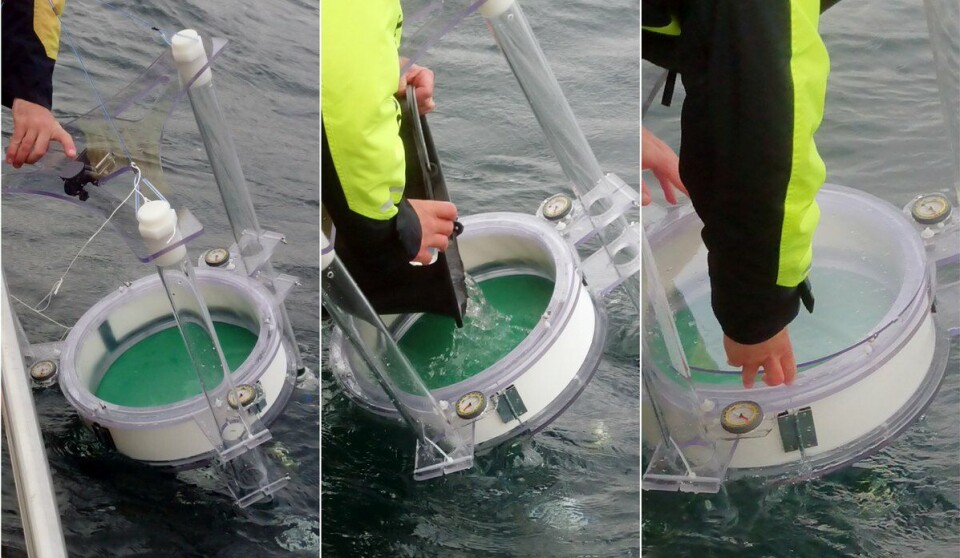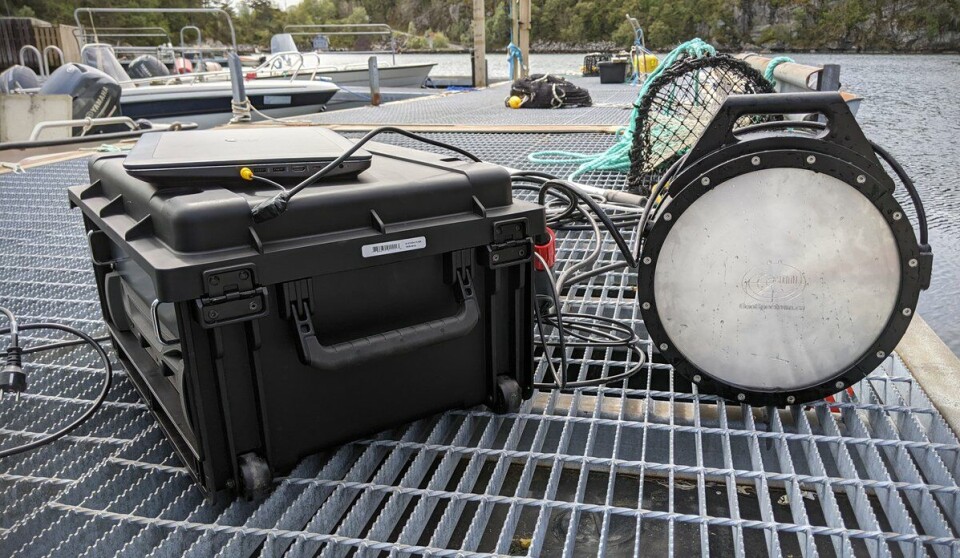THIS ARTICLE/PRESS RELEASE IS PAID FOR AND PRESENTED BY the Institute of Marine Research - read more

Could fish larvae be disturbed by offshore wind farms?
A unique project at the Institute of Marine Research (IMR) aims to shed light on the impact of offshore wind farms on the vulnerable early life stages of fish.
Fish larvae can travel a long distance from their spawning site to where they grow up, being carried by the ocean currents as well as swimming and orienting using cues from the environment such as sounds and odors. If they are disturbed on this dangerous journey, it can affect where they end up - and thus the chances they have of surviving.
“In the worst case, they could end up in a place where there is little food and a lot of predation,” says postdoctoral fellow Alessandro Cresci.

Simulated wind farm noise
Cresci, together with principal research scientist Howard Browman (also IMR), leads a unique-in-the-world project on whether the noise from wind turbines can interfere with the behavior of small fish larvae. The project is conducted from IMR's research station in Austevoll. In the spring and summer of 2021, Cresci and team took 120 cod larvae and various high-tech equipment with them for an in situ experiment in Bjørnafjorden in Western Norway.
The larvae were placed in specially designed drifting chambers, allowing them to drift freely in their natural environment. The chambers are equipped with a wide array of sensors that detected the behavior of the millimeter-long larvae as the researchers deployed special low-frequency 'loudspeakers' to recreate the operational noise generated by wind turbines.
The goal of the experiment is to see if there is any difference in the behavior of the larvae with and without the low-frequency noise.
“We are looking at two aspects of larval behavior in particular. One is whether the larvae change their orientation direction; are they attracted towards the sound, or repelled away from it. The second aspect is whether noise changes their swimming kinematics, that is, velocity and acceleration,” says Alessandro Cresci.

Advanced high-tech equipment in the field
Cresci and his colleagues have previously done several studies on behavior of fish larvae in carefully controlled laboratory conditions. This experimental design was not an option for the present study, however.
“Studying the impacts of sounds from wind farms on fish larvae is challenging, as it is impossible to reproduce such low-frequency sounds in tanks in laboratory settings. The soundscape would never match the real-world scenario,” says Cresci.
The explanation is that sound waves travel much farther in water than in air, and that sound in a water tank would be altered by bouncing back and forth between the walls.
To recreate the constant, low-frequency sound from wind turbines in the fjord, IMR invested in cutting-edge sound projectors, specially ordered from Canada.

Detecting the particle motion generated by a wind turbine
In addition to the sound projector and hydrophones – a microphone for underwater use – the researchers also brought with them a unique particle motion sensor that registers the microscopic movements of water molecules created by soundwaves in three dimensions.
Particle motion is a separate aspect of sound from sound pressure, which is what is detected by a microphone or hydrophone. In contrast to sound pressure, particle motion is directional.
“The particle movement is the component of sound that fish are most sensitive to. It is also what allows fish to locate the source of the sound. That is why it’s important for us to measure it,” Cresci explains.

Next steps
The researchers are now in the process of analyzing the data they collected during the experiments. At the same time, they are planning new experiments, this time with haddock larvae. The first results from the study are expected to be published during 2022.
The project are a part of a larger research initiative at the institute with the aim of supplying knowledge-based advice to authorities and industry on effects of offshore wind farms on marine ecosystems. There are still many unanswered questions in this area, not least when it comes to effects on the vulnerable early life stages of fish.
For example, turbines are connected by an array of subsea cables that create magnetic and electromagnetic fields. The project will also investigate potential effects of such cables: Do these attract fish larvae? Do they alter their swimming?
“The expansion of the offshore wind industry is underway and it is happening fast. Therefore, there is a great need for answers on the impact of turbines on marine ecosystems,” says Cresci.
See more content from the Institute of Marine Research:
-
These whales have summer jobs as ocean fertilisers
-
Have researchers found the world’s first bamboo coral reef?
-
Herring suffered collective memory loss and forgot about their spawning ground
-
Researchers found 1,580 different bacteria in Bergen's sewage. They are all resistant to antibiotics
-
For the first time, marine researchers have remotely controlled an unmanned vessel from the control room in Bergen
-
New discovery: Cod can adjust to climate change – from one generation to the next





































